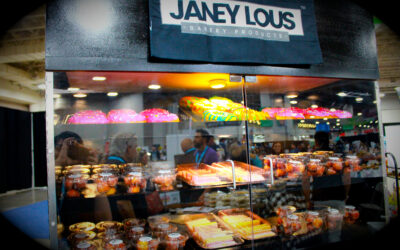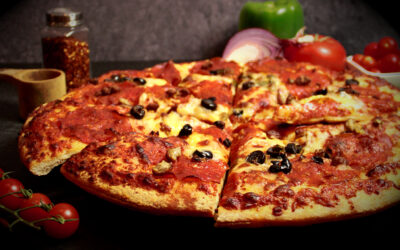The frozen pizza found in your favorite grocery store, or even now in your own home freezer, is a far cry from the first frozen pizzas ever sold. It has taken decades for frozen pizza manufacturers to perfect freezing technologies and recipes to guarantee a fresh oven-baked taste from frozen products.
Frozen Food’s Beginnings
Freezing as a means of preserving food has been around for ages. However, when Clarence Birdseye introduced “flash-freezing ” as a commercial practice in the 1920s, it opened up a whole new world of options for food manufacturers.
Birdseye investigated the food freezing process used by people in the Arctic, who froze fish and meat in ocean water. Using fans, brine, and ice to mimic and alter their technique, he could package and sell frozen fruits, vegetables, and meat to the public. This allowed people all over the world the chance to eat fresh year-round.
Pizza’s Turn
Flash forward to the 1950s. Pizza was starting to become a popular option in the United States, brought over by a large population of Italian immigrants. While frozen pizza had been available as early as the 1940s, it was unpopular and unappealing as the crust was left soggy due to the ice crystals that formed when freezing. This all changed with a flash-freezing technique patented by a man called Joseph Bucci.
Bucci’s flash-freezing process drew on the methods used by Birdseye for meats and vegetables and helped to eliminate the extra moisture and ice buildup in frozen pizza dough. This allowed the dough to maintain its crisp texture and chewy structure when baked.
Frozen Pizza’s Founding Fathers (and Mothers)
Totinos
The preeminent founding mother of frozen pizza is Rose Totino. Rose was a second-generation Italian-American living in Minnesota with her husband, Jim. Rose and Jim opened an Italian restaurant called Totino’s Italian Kitchen in 1951. Rose began baking the same pizzas she made for her children at home, putting them on the restaurant’s menu. By the end of the 1960s, the couple was producing the best-selling frozen pizzas in the United States.
Frozen pizza started as a regional frozen product, with popular restaurants producing frozen pies for their loyal customers to bake at home. However, the demand quickly gained notice from the more significant players. Pillsbury bought the Tostinos business in 1975 for twenty million dollars and still leads the way as the top frozen pizza manufacturer in America.
Schwan’s
Once Rose Totino started the frozen pizza boom, door-to-door ice cream delivery company Schwan’s jumped on the frozen pizza bandwagon. They began by buying Tony’s, which is still around today. From there, they purchased Freschetta, now known for its healthier pizza options. Their most significant contribution to frozen pizza history, however, was the purchase of Red Baron. Red Baron, to this day, is Schwan’s most successful frozen pizza.
Schwan’s began selling frozen pizzas to schools in the 1970s, taking advantage of federal food subsidies for tomato sauce and cheese. Who among us does not have fond memories of school lunch pizza days?
Schwan’s also introduced a child-sized pizza kit that could be delivered straight to your home. This kit was a convenient after-school treat for kids, removing pressure from busy parents.
With the intense popularity of frozen pizza in the United States by the 1980s, the federal government decided to step in and set quality standards. The Food and Drug Administration (FDA) ruled that any frozen pizza using imitation cheese needed to indicate that fact on the label.
DiGiorno
As frozen food technology advanced and customer standards rose, one frozen pizza brand changed the game. In 1995 Kraft’s DiGiorno brought to the kitchen table a rising pizza crust. These pizzas were unlike any other frozen pizzas on the market and elevated the product.
Kraft added food additives to frozen pizza dough, such as oil, yeast, and baking soda. These ingredients strengthened the dough and kept it hydrated during baking. The result was a pizza crust that customers could watch rise up in their own kitchen ovens.
Most will recall the very catchy slogan, “It’s not delivery. It’s DiGiorno.” DiGiorno claimed that you could compare their frozen pizzas to your favorite pizza delivery place. DiGiorno quickly climbed the ranks of frozen pizza manufacturers to claim the top spot and keep that spot for over two decades.
From humble beginnings, baked up in the Italian restaurant kitchen of Rose and Jim Totino, to modern frozen pizza products that rival some of the best local joints, frozen pizza has risen. The frozen pizza industry is now worth around five billion dollars in the United States alone.
If you look at your favorite grocery and convenience stores around the country, you’ll notice that the historical names are all still there but that there are a lot of new names popping up as well. With changes in customer needs and tastes, you’ll find a huge variety of exciting frozen pizza choices. There are healthier options, including cauliflower crusts and gluten-free options, as well as different takes on the frozen pizza structure like pizza pockets and bagels, and loads of creative flavors and toppings such as bbq sauce or Thai chicken. There is now a tasty, frozen option for regardless of your flavor preferences.



